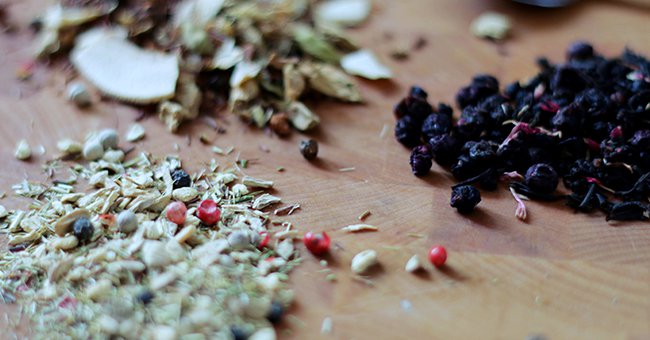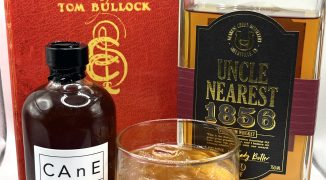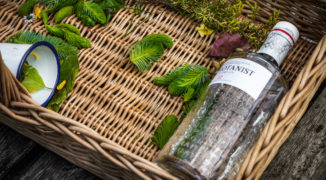It’s that time of year again. Temperatures are falling, footballs are flying and everybody’s crazed for pumpkin spice. There’s no better time to sit on the porch sipping hot tea or a strong drink. Better yet, why not both? Tea infusions are a great way to incorporate the comforting flavors of tea into your favorite cocktails. Whether black or green, oolong or herbal, teas add a depth of flavor to whatever you choose to infuse, from syrups to vermouth to straight spirits.
It may not surprise you to learn that tea and liquor are old comrades. Because of the bitter flavor of the green and black varieties, tea was first used as a central component for punch during colonial times, long before Prohibition. In fact, teas were more commonly consumed with alcohol in those days than on their own. It was during Prohibition when non-alcoholic tea consumption became popular, a common beverage to drink at clubs, hotels and social gatherings. But in recent times, there has been a resurgence of interest in combining the two.
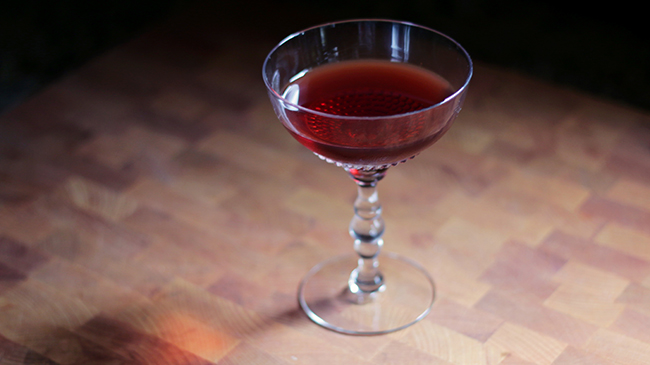 Teas were most often enjoyed in a strong punch during colonial times. A traditional punch could contain several spirits, tea, citrus juice, sugar and champagne.
Teas were most often enjoyed in a strong punch during colonial times. A traditional punch could contain several spirits, tea, citrus juice, sugar and champagne.
Tea-infused drinks have become a growing trend in the craft cocktail arena, thanks largely to Audrey Sanders’ famous Earl Grey from Pegu Club in New York. Her tea-infused gin martini was the first of its kind, as she developed the method of steeping the tea directly in the liquor, rather than adding tea to a cocktail and diluting the spirit. Since this crafty revelation, many bartenders have taken a (tea) leaf from Audrey’s book, finding creative ways to incorporate it into their own favorite cocktails. With a method that’s quick and easy, it’s no surprise that tea-infused drinks are popping up in bars all over the country.
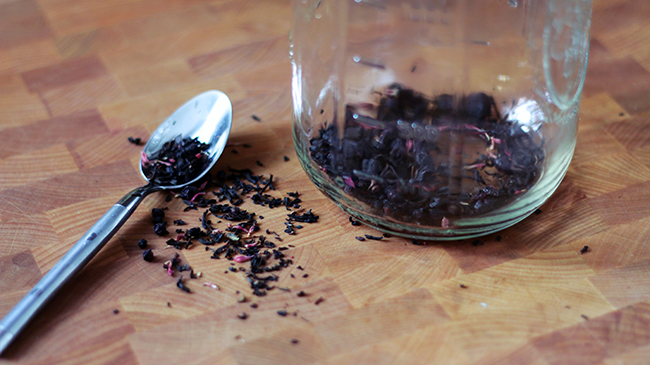 Loose teas work best for infusions, as they impart fuller flavor and offer more control over ratio measurements than tea bags.
Loose teas work best for infusions, as they impart fuller flavor and offer more control over ratio measurements than tea bags.
Tea infusions are pretty simple, but there are a few important factors to remember for optimal results. Most importantly, choose a quality spirit. Mid to top-shelf spirits are preferable, as cheap liquors will still taste astringent after infusing. As for measurements, a general ratio is four tablespoons of loose tea (or four tea bags, though loose teas are preferable) per 750mL bottle of spirit. Steep times can vary, but two hours is usually ideal. Remember that spirits with higher ABVs will steep more quickly than those with lower ABVs. Green tea also has a very short steeping time as it becomes very bitter. Black teas are intense and can overpower the spirit if steeped too long. Herbal teas are probably the easiest to work with, as they don’t usually contain any tea, meaning they don’t run the risk of turning bitter or astringent.
Once you have determined the right equation for your particular brew, the process is painless. No heating is necessary for infusing high-proof spirits, so just pour the loose tea (or tea bags) directly into the spirit, shaking or stirring occasionally until the desired intensity is reached. Double strain the infusion, and it’s ready to use.
 Blueberry black tea steeps in gin for the perfect fall Bramble.
Blueberry black tea steeps in gin for the perfect fall Bramble.
1. Gin and Blueberry Black Tea
Perhaps the most common spirit to infuse with tea is gin. Given that gin is already an infusion itself, it makes a great base for added flavor. I used a delicious and intense blueberry black tea to infuse a high quality gin (Russell Henry White Ginger is my favorite, and it works really well with other floral and fruit flavors). The gin turned a beautiful deep magenta, which makes for even more gorgeous cocktails. I recommend using this gin in a Bramble with fresh lemon juice, muddled blackberries and Creme de Mure for the most delicious cobbler you’ve ever tasted. But don’t stop there; it’s also killer in a classic Aviation or on its own with soda and a lemon wedge.
 Shake 1.5 oz of infused gin with .75 oz of fresh lemon juice and .75 oz of Creme de Mure. Strain into a rocks glass over crushed ice and garnish with a lemon peel and a fresh blackberry.
Shake 1.5 oz of infused gin with .75 oz of fresh lemon juice and .75 oz of Creme de Mure. Strain into a rocks glass over crushed ice and garnish with a lemon peel and a fresh blackberry.
2. Whiskey and Green Tea
Whiskey is another great partner for tea. Since the flavor of whiskey is spicy and intense, I recommend steering towards something softer like herbal, white or green tea. I chose a green tea blend to infuse a white whiskey from a local distillery. And because green tea can turn bitter pretty quickly, I taste-tested every 30 minutes to control the intensity of the flavor. Green tea whiskey (bourbon and rye work just as well) is ideal for seasonal cocktails. I mixed mine with ginger liqueur (Domaine de Canton), fresh lemon juice, honey syrup and mint for a boozy twist on a traditional hot green tea. It’s slightly bitter with a hint of sweetness and the optimal amount of citrusy spice.
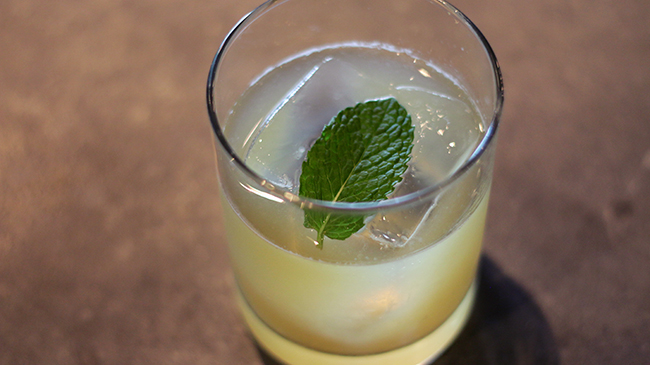 Shake 2 oz of infused whiskey with .75 oz lemon juice, .5 oz honey syrup, .5 ginger liqueur, and 4 mint leaves. Double strain over a large rock and garnish with a mint leaf.
Shake 2 oz of infused whiskey with .75 oz lemon juice, .5 oz honey syrup, .5 ginger liqueur, and 4 mint leaves. Double strain over a large rock and garnish with a mint leaf.
3. Reposado and Roobois
As ginger is one of my favorite fall flavors, I chose a ginger rooibos tea to infuse reposado tequila (the Organic Puro Verde is great). I steeped the ginger tea for two hours, which resulted in a subtly spice. I blended it with fresh orange and lemon juices, Creme de Cassis, blackstrap bitters, and a dash of cinnamon for a refreshing and well-balanced fall cocktail, adoringly named after my favorite Spice Girl.
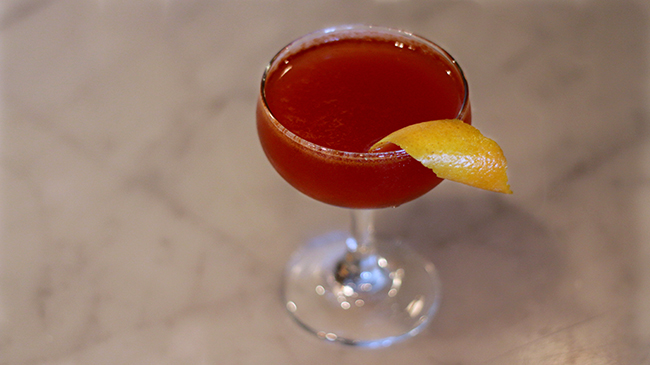 Shake 1.5 oz infused tequila with 1 oz of orange juice, .5 oz Creme de Cassis, .25 oz lemon juice, 2 dashes blackstrap bitters and 1 dash cinnamon. Double strain into a coup and garnish with an orange peel.
Shake 1.5 oz infused tequila with 1 oz of orange juice, .5 oz Creme de Cassis, .25 oz lemon juice, 2 dashes blackstrap bitters and 1 dash cinnamon. Double strain into a coup and garnish with an orange peel.
4. Sweet Vermouth and Lansang Souchong
Since straight spirit infusions can be overwhelming in certain cocktails, there are other options for getting tea flavor into your drinks. Tyler Fry, tea infusion aficionado from Chicago’s The Violet Hour, steeps Lapsang Souchong tea into sweet vermouth for his Hori Smoku, a play on a manhattan with spiced rum, Japanese whiskey and amaro. The end result is a smoky, bitter masterpiece. Vermouth infusions are useful because typically, you’ll use less vermouth in a cocktail than the base spirit, meaning the tea won’t overpower the drink. Try a tea-infused vermouth in a basic Manhattan or better yet, in a Remember the Maine, a boozy, sweet and smoky classic.
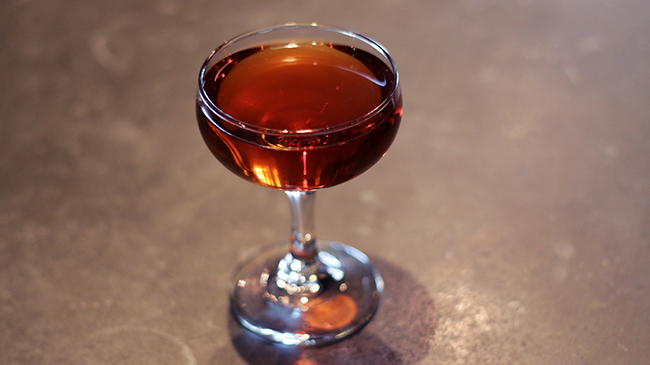 Stir 2 oz of rye with .75 oz of infused vermouth, .25 oz Cherry Heering, and 1 bar spoon of absinthe. Strain into a coup.
Stir 2 oz of rye with .75 oz of infused vermouth, .25 oz Cherry Heering, and 1 bar spoon of absinthe. Strain into a coup.
Another method you can use to infuse your cocktails is steeping tea in syrup. This technique is helpful when the tea you’re using is too intense for a spirit or if you want the option of adding the flavor of tea into many different cocktails without all of the previous steps. Stir equal parts sugar and boiling water together until fully saturated. Then steep your tea according to the recommended time on the label. I infused demerara (equal parts turbinado sugar and water) with chai tea for an old fashioned that’s perfect for fall. Since I wanted a very intense tea flavor, I let it steep for twice the recommended time, tasting it periodically to achieve the right amount of chai flavor.
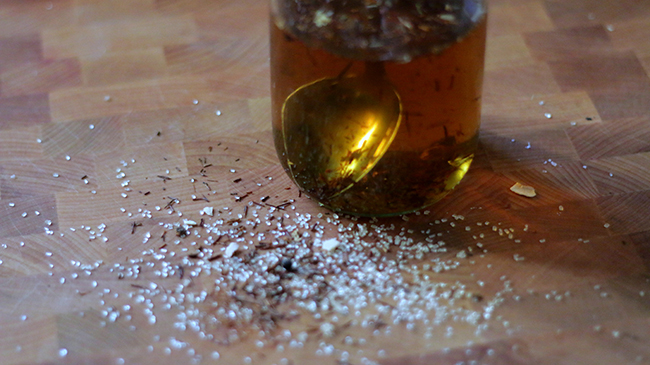 Tea-infused demerara and syrups are versatile and easy to make. Plus, they stay good for weeks with refrigeration.
Tea-infused demerara and syrups are versatile and easy to make. Plus, they stay good for weeks with refrigeration.
I combined my demerara with Eagle Rare, since the caramel, cinnamon and spice notes complement the chai. I also used 3 dashes of Angostura and 1 dash of cardamom bitters to further elevate the seasonal flavor. The result is a silky, spicy drink with all of the body of a traditional old fashioned and all of the comfort of sweater weather.
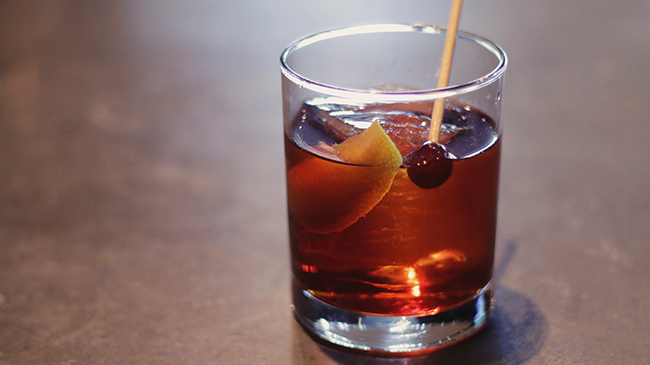 Muddle an expressed orange peel, 1 dash cardamom bitters, 3 dashes Angostura bitters, and .25 oz demerara in a rocks glass. Add 2.5 oz of chai-infused bourbon and a large rock. Stir until cold and garnish with a cherry.
Muddle an expressed orange peel, 1 dash cardamom bitters, 3 dashes Angostura bitters, and .25 oz demerara in a rocks glass. Add 2.5 oz of chai-infused bourbon and a large rock. Stir until cold and garnish with a cherry.
There is no limit to the myriad combinations of tea and spirits, and with the basics under your belt, you can let your imagination run wild.


